From the Archives: President Wilson’s 1919 visit to Los Angeles
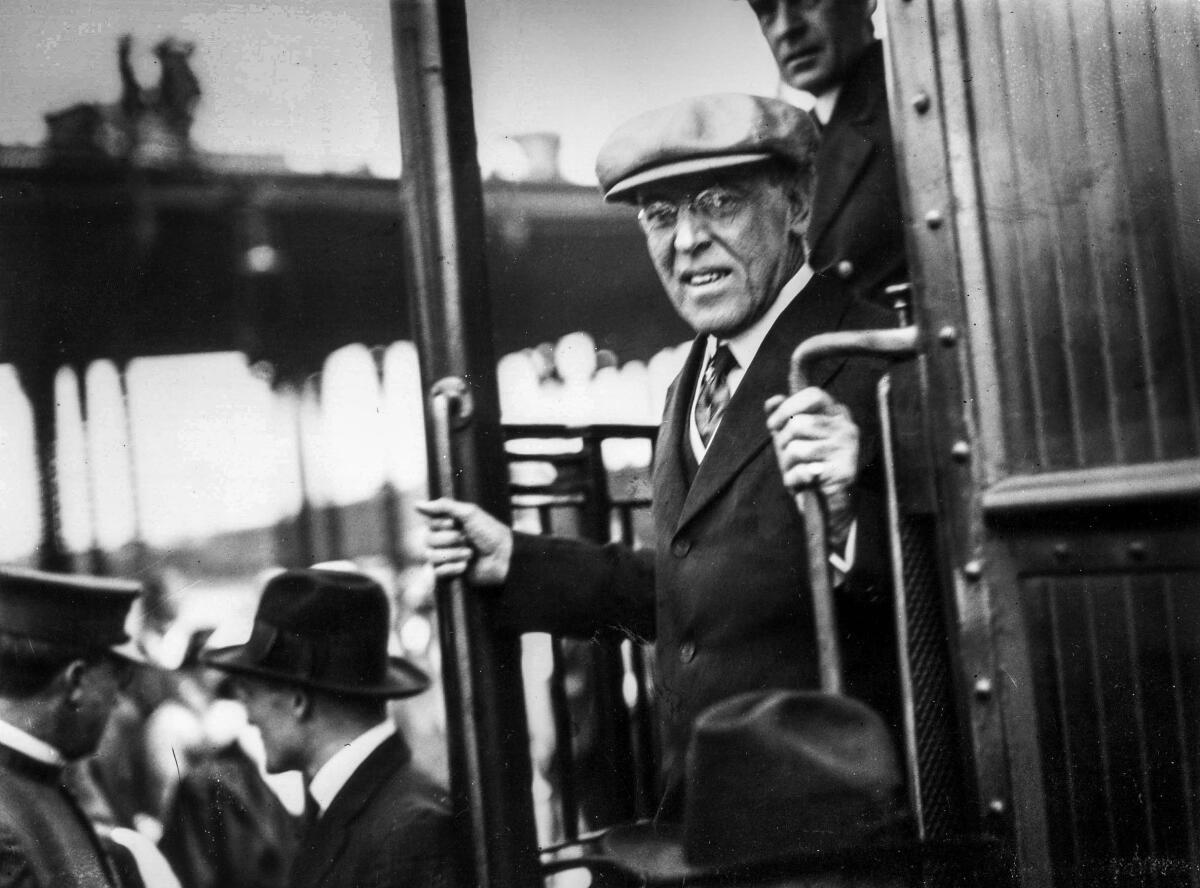
- Share via
On Sept. 3, 1919, President Woodrow Wilson embarked on a nationwide railroad tour to promote American participation in the League of Nations. The 22-day, 8,000-mile journey took Wilson to every corner of the United States.
On Sept. 19, Wilson’s train stopped in Los Angeles, before proceeding to San Diego. Wilson returned the next day for a parade and speech in Los Angeles.
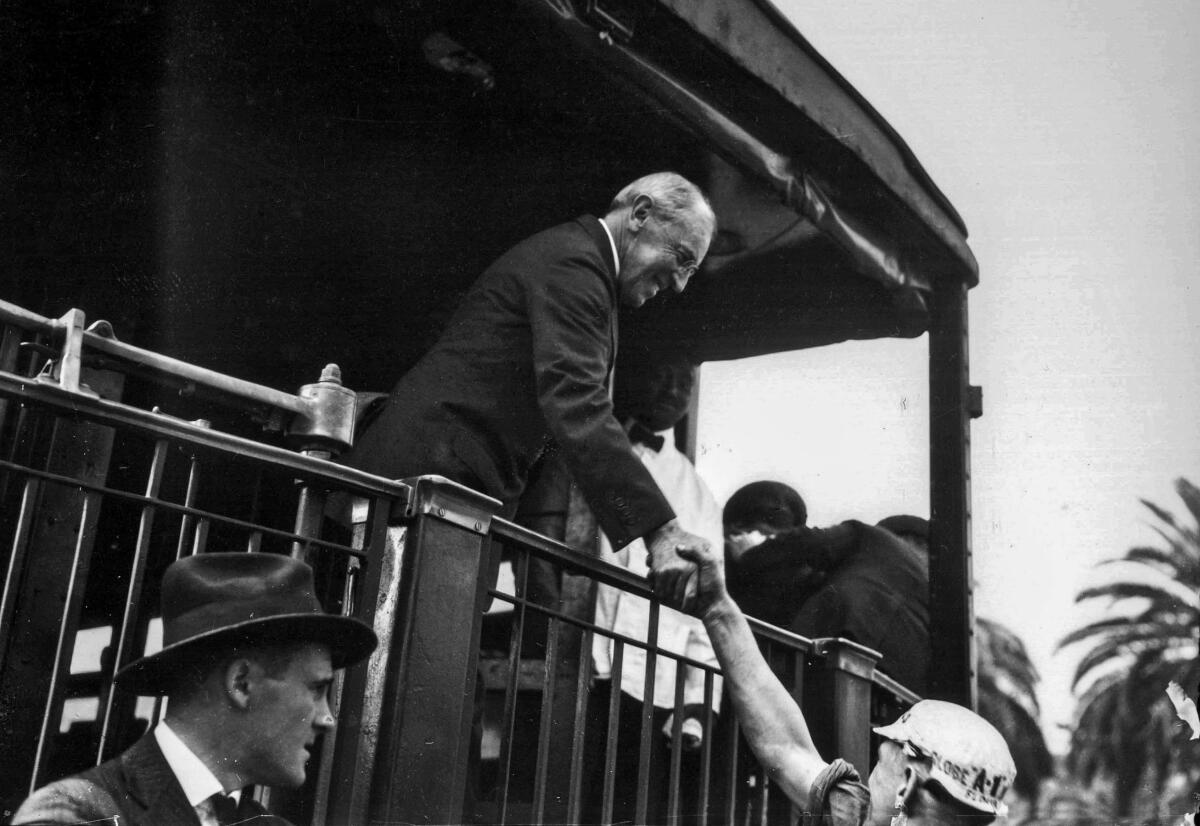
On Sept. 19, about 1,000 people assembled at the Santa Fe passenger station for a glimpse of the president. The Los Angeles Times reported the next day:
“As the train pulled in, a squad of police and detectives drove back the crowd, and half a hundred Secret Service men, dropping from all exits in the train, stepped into their places with clock-like precision, forming a protective barrier between the president and the people.
“Newspaper men and photographers, half a hundred strong, flocked to the rear platform of the observation car and called to President Wilson, who responded very graciously. His appearance was the signal for the whole crowd to rush the police lines and make their way to the car steps, where the president was given three rousing cheers.”
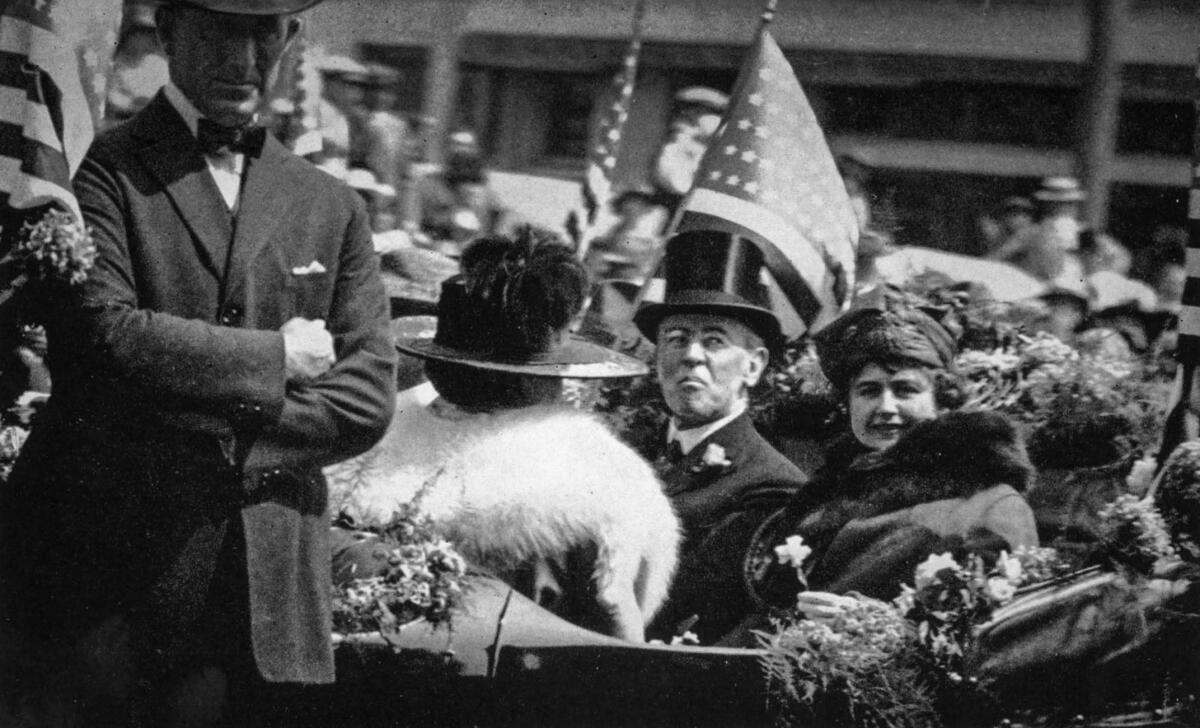
On Sept. 20, President Wilson returned to Los Angeles. The Times estimated that 200,000 spectators were on hand for Wilson’s parade through downtown Los Angeles.
That evening, President Wilson expounded “the principles of the League of Nations” to about 7,000 at the Shrine Auditorium. The Times estimated another 50,000 people arrived at the Shrine but were turned away.
The next day, Wilson boarded his train and took his public speaking tour back East.
Within days, Wilson’s health suffered. In Pueblo, Colo., he collapsed. Afterward, he returned to Washington, D.C. On Oct. 2, 1919, President Wilson suffered a stroke.
The United States never joined the League of Nations.
This post originally was published on June 20, 2011.
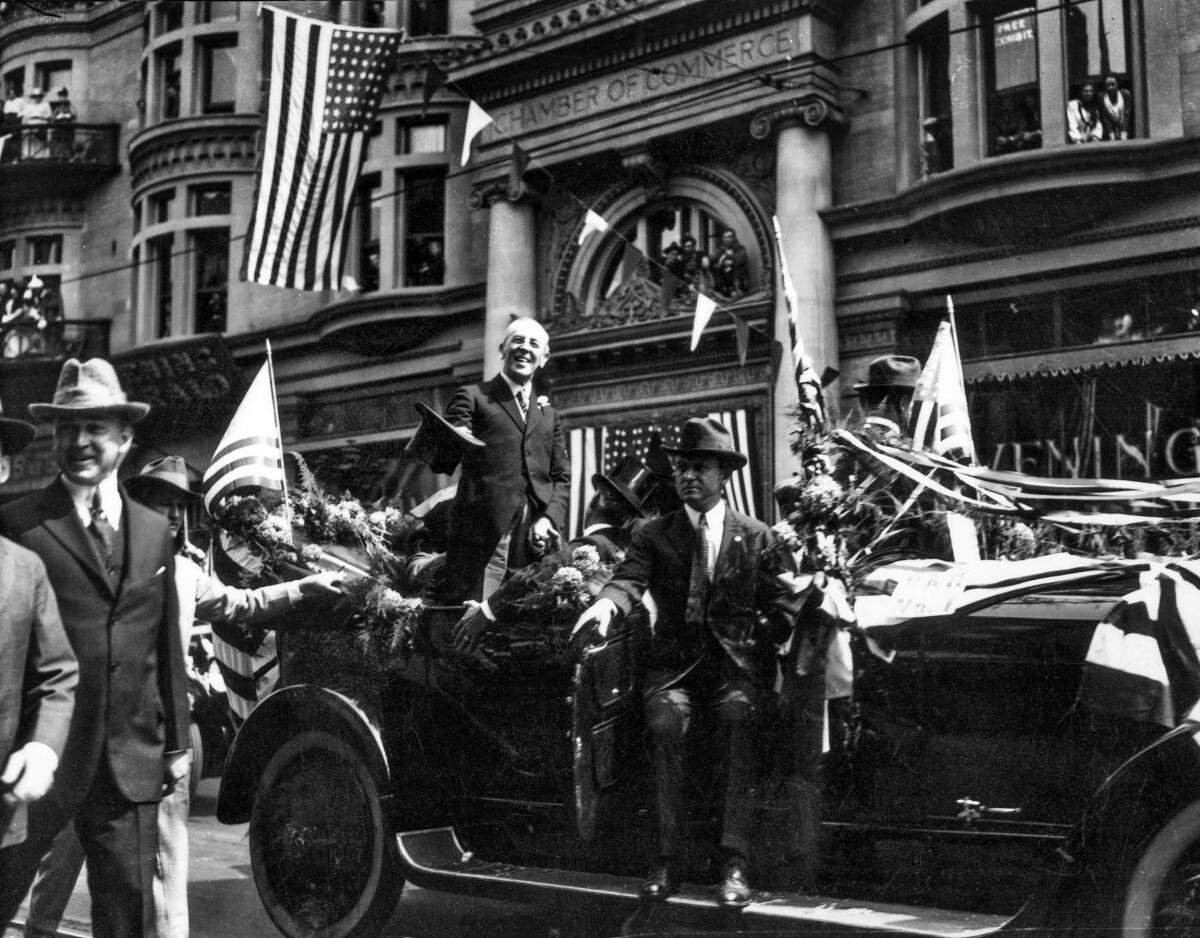
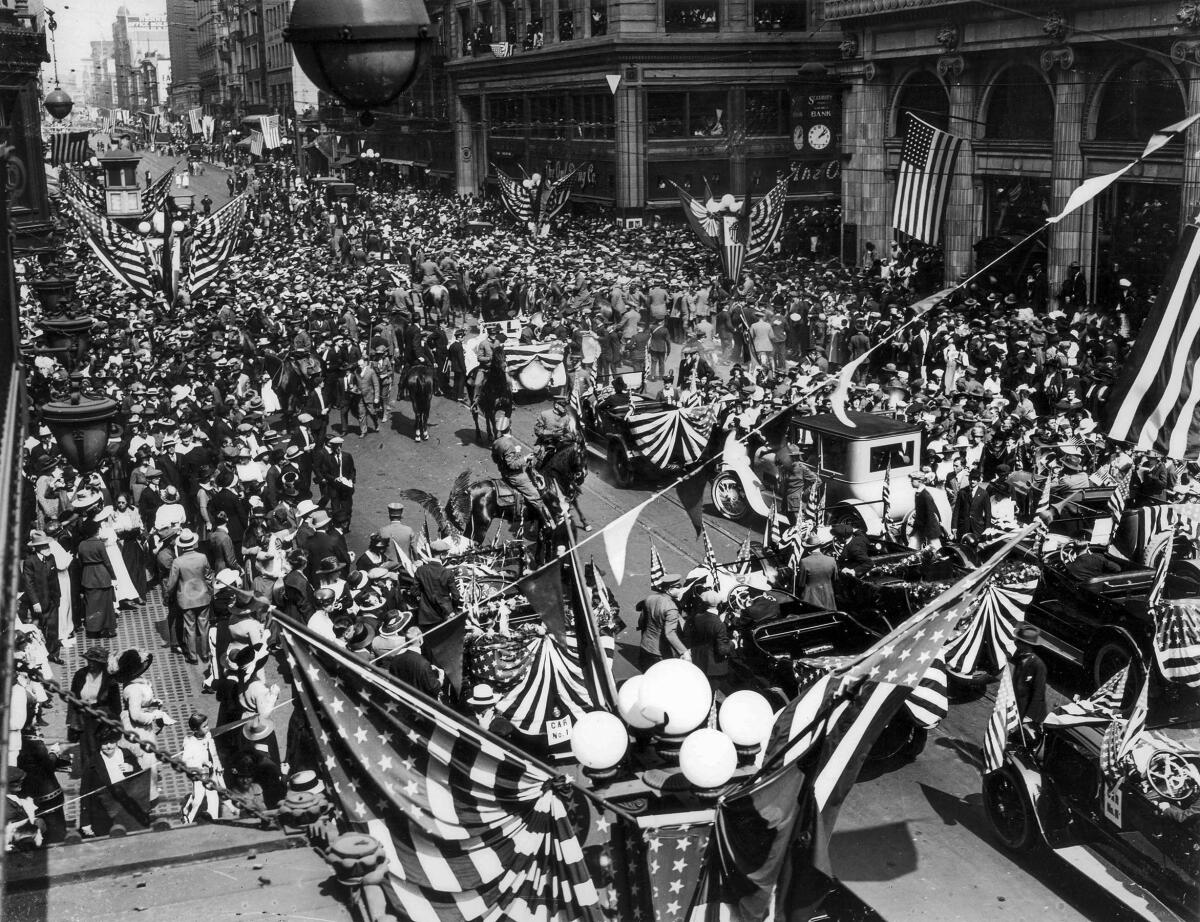

More to Read
Sign up for Essential California
The most important California stories and recommendations in your inbox every morning.
You may occasionally receive promotional content from the Los Angeles Times.










